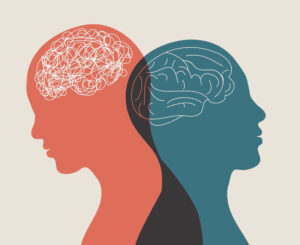Episode Summary:
We all or mostly all consider ourselves competent drivers. In this episode, a Driving Safety expert reviews health-related concerns and conditions that may negatively impact our driving skills and experience. She also reviews some very important data and recommendations on how to become an even better driver.
Guests:
Mi Ae Lipe is a Seattle-based writer, editor, and graphic designer who lives another life as a citizen traffic safety advocate. In 2011, she founded a blog called Driving in the Real World and is the author of a very popular monthly column on traffic safety and ADAS technology for Roundel, the national magazine of the BMW Car Club of America.
Along with fellow citizen advocate Mark Butcher, she has worked extensively with Washington State government agencies to strengthen their driver training, testing, instructor curricula, and licensing standards. In 2016, she and Mark organized and led a fact-finding trip to the UK by Washington State government officials and driving-school owners to explore that country’s traffic safety ecosystem, long considered one of the best in the world. In 2017, she and Mark were publicly recognized by NHTSA at the Lifesavers Conference for this work.
She is currently part of a government group that shapes strategy and policy around autonomous vehicle testing and implementation in Washington State, and she writes and consults about road safety for organizations both in America and internationally.
During This Episode We Discuss:
- Eyesight, night vision, hearing, mobility, physical restrictions, mental health, emotional health, fatigue, stress levels, and age-related concerns as they pertain to driver performance and safety
- Stats for men versus women regarding accidents
- The age range for most accidents
- A brief overview of Roadcraft, a UK methodology for advanced street driving, such as:
- Wear your seatbelts
- Reduce distraction
- Positioning
- Following distances
- Do not consider the space ahead of you as yours alone
- Road rage
- Don’t drive ahead of yourself
- Always signal a turn or lane change
- Constantly scan all your mirrors every 5 to 8 seconds for potential problems, developing road conditions, and hazards.
- Pay attention to how you feel behind the wheel and if you feel faint or not quite alert enough to drive, pull over immediately
- Adjust to changing weather and road surfaces
- GPS can be both a blessing and a problem
- Autonomous Driving Vehicles, where we are, where we will be
- Remind people to have the courage to intervene as passengers, bystanders, and drivers if we see unsafe behavior. This is really important. If all of us (or even many of us) exerted social pressure, it could make a real difference in road safety
- What should new drivers do to improve their driving skills? What should veteran drivers do to improve their driving skills?
- Should new drivers go to novice track events such as car control clinics?
- Wear your seatbelts
Quotes (Tweetables):
——Fighter jet pilot vision tactics: overcoming saccades that cause us to miss seeing many things on the road; the cognitive problem that we’re more likely to see what we expect to see; the phenomenon of windscreen framing (including A-pillars and mirrors), which eliminates as much as 40% of what we see out our windows; why fast-moving things can seem stationary to us and we don’t notice them; and how our eyes are built for detecting movement, not low contrast; recommend the video “Invisibility Training for Motorcyclists” on YouTube.
Mi Ae Lipe
—— There are also anatomical differences between men’s and women’s brains. Men have a bigger amygdala while women have a larger hippocampus, which affects thinking for both genders;
The net result is that men consistently take more risks behind the wheel: They speed more, drink more, and engage in competitive behavior more (“I’m going to follow the vehicle more closely because I don’t want to let that person get ahead of me”). They also wear their seatbelts less. So, they crash more. (Interestingly, more females are likely to be killed or injured by crashes of equal severity for several reasons.)
Mi Ae Lipe
—— First, when it comes to traffic safety, we never call them “accidents,” which implies a lack of responsibility and absolves blame (“Oh it was just an accident”). So-called accidents are almost always preventable. Instead, we call them “crashes” or “collisions.” Language really does matter.
Mi Ae Lipe
——Roadcraft, a UK methodology for advanced street driving; IPSGA (Information, Position, Speed, Gear, and Acceleration) and MSM (Mirror-Signal-Maneuver); this forms the framework upon which all best-practice driving is based in the UK. The beauty is that it is a proven methodology refined over nearly 80 years that works in any vehicle under any road condition and any type of weather.
Mi Ae Lipe
Recommended Resources:
Driving in the Real World
Mi Ae Lipe’s own traffic safety blog and website: https://drivingintherealworld.com/
A Fighter Pilot’s Guide to Surviving on the Roads by John Sullivan
An astounding booklet about common vision issues that cause us to miss seeing many things while driving.
https://www.gedandclaire.com/downloads/a-fighter-pilots-guide-to-surviving-on-the-roads.pdf
Invisibility Training for Motorcyclists
Informative (and entertaining) YouTube video about common vision issues; includes principles from A Fighter’s Pilot’s Guide, listed above
There Are No Accidents: The Deadly Rise of Injury and Disaster—Who Profits and Who Pays the Price by Jessie Singer
An amazing book that uncovers how “accidents” aren’t what they seem across numerous industries, from transportation to nuclear energy
https://www.simonandschuster.com/books/There-Are-No-Accidents/Jessie-Singer/9781982129668
Roadcraft
Definitive guides to advanced UK police and motorcycle driving techniques
How Not to Crash by Reg Local
A terrific, approachable book for civilian drivers of all ages; uses Roadcraft principles
HPC (The High-Performance Course)
Safety-focused performance driving for motoring enthusiasts (based in the UK)
https://www.high-performance-course.com/
High and Mighty: SUVs—the World’s Most Dangerous Vehicles and How They Got That Way by Keith Bradsher
A deep dive into why SUVs are so unsafe for their occupants and others
We Save Lives
A nonprofit that promotes citizen advocacy around drunk, drugged, and distracted driving; founded by Candace Lightner, founder of MADD (Mothers Against Drunk Driving); includes info on National Passenger Safety Week and the Courage to Intervene movement
My Car Does What?
Consumer-friendly guide to advanced driver assistance technology (ADAS)
Episode Transcript:
Coming soon!



